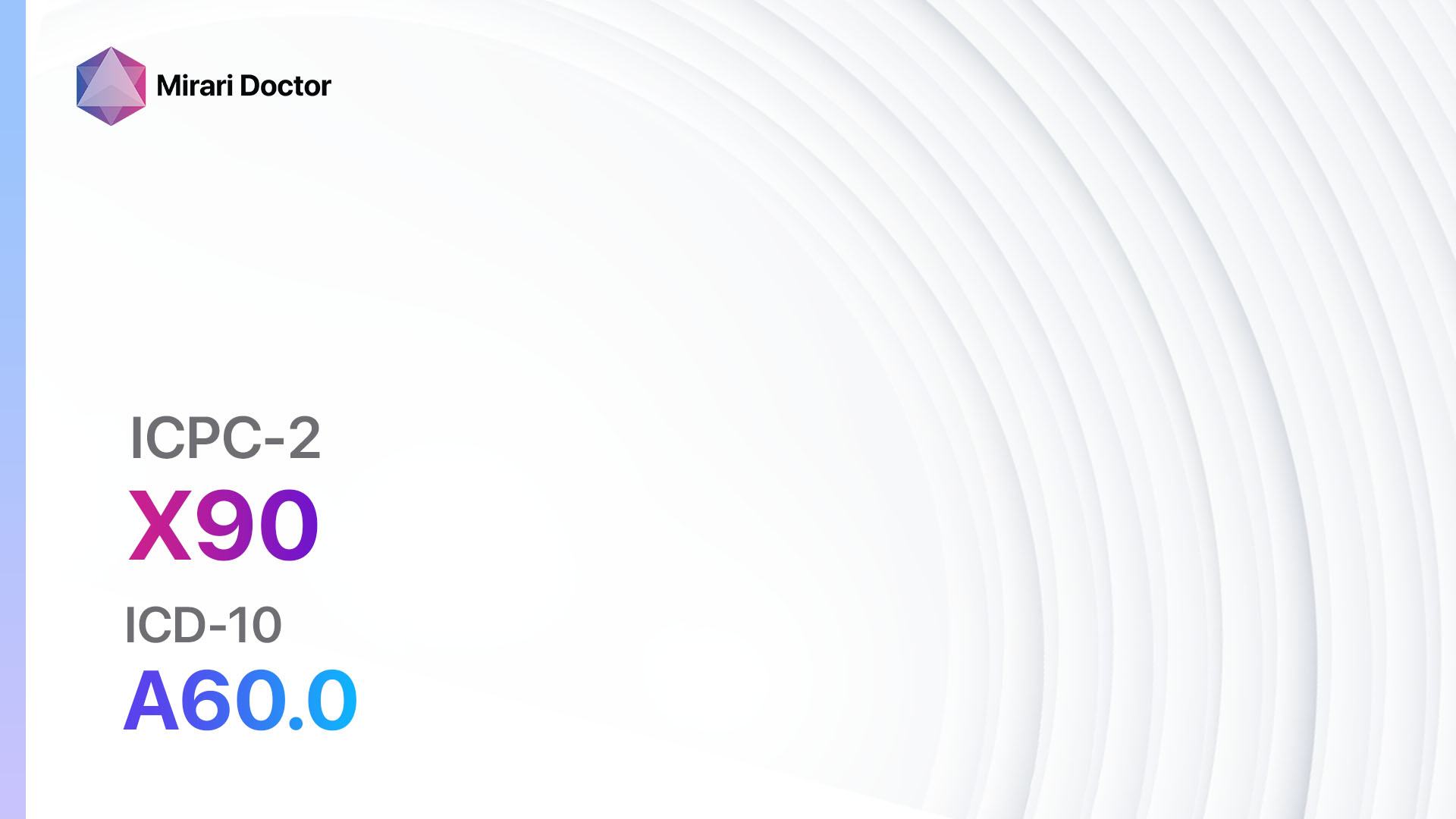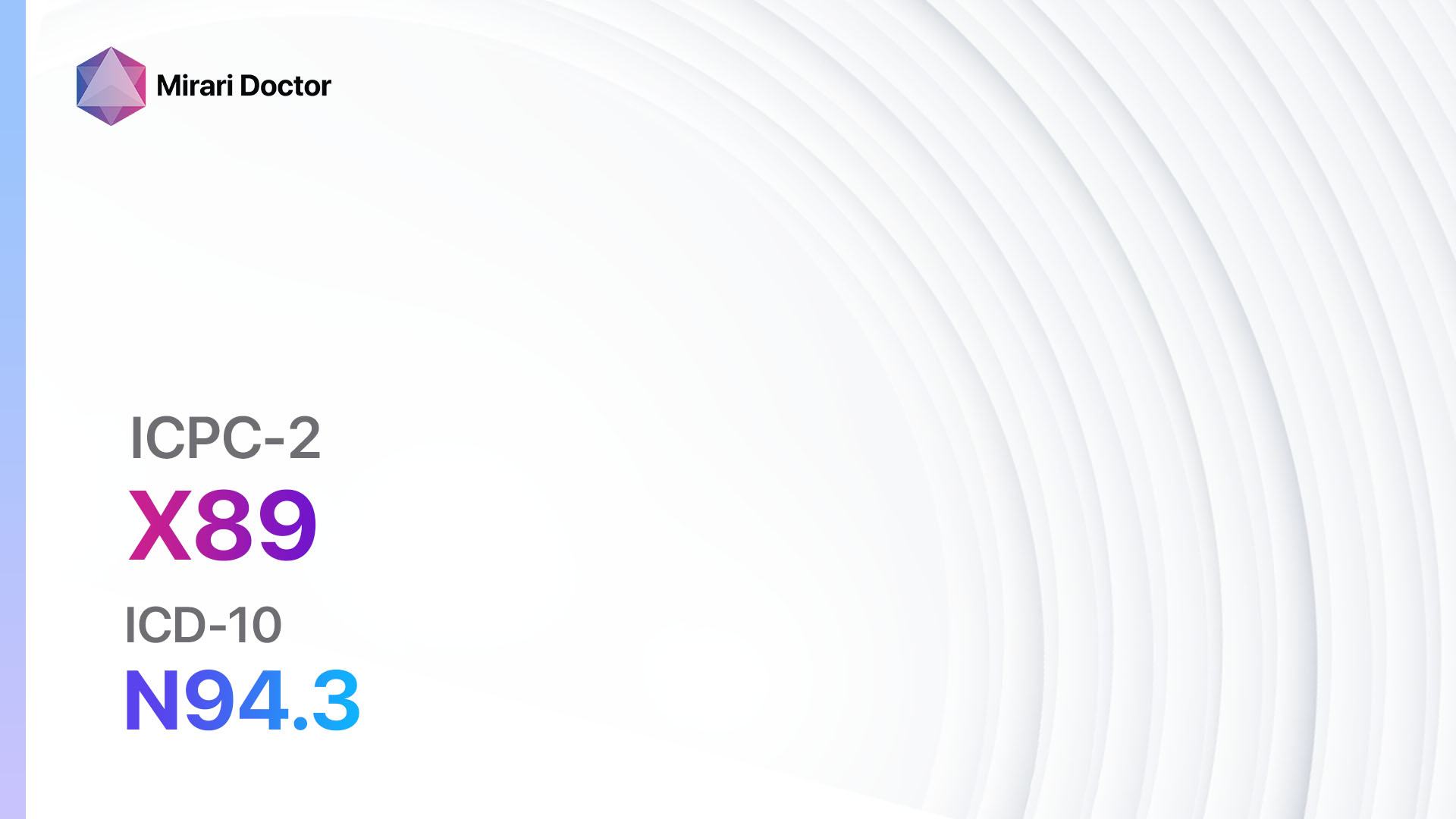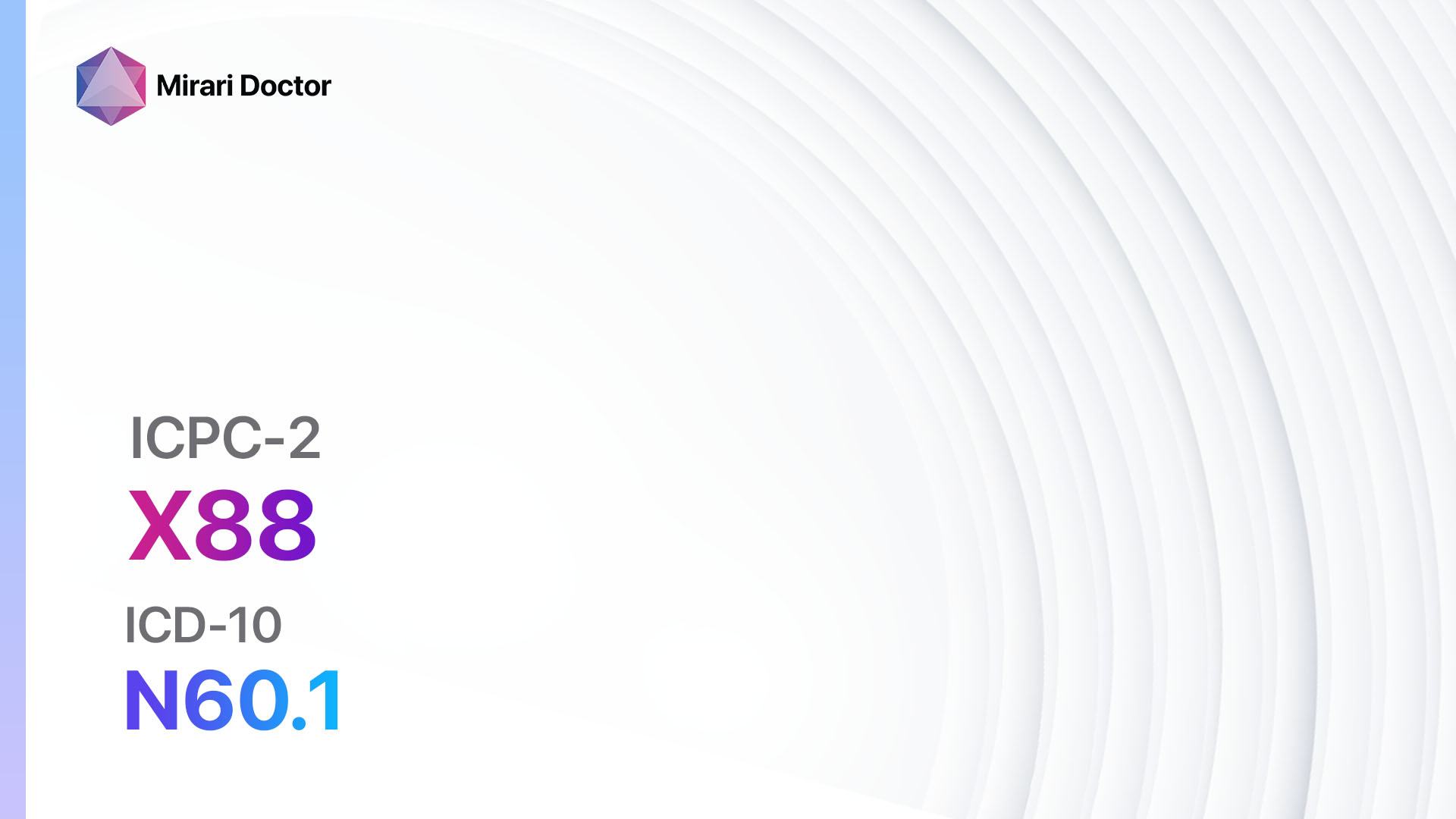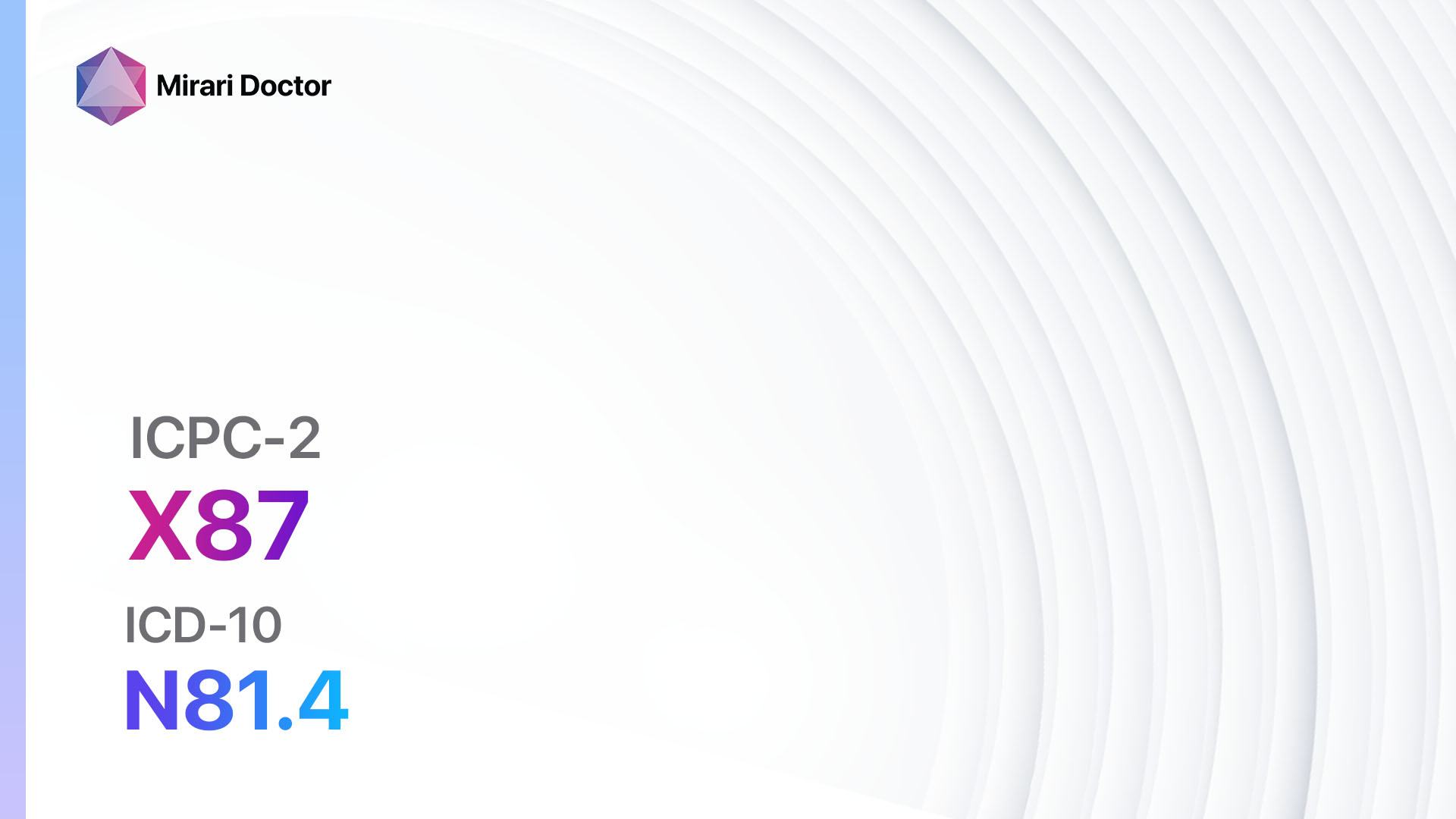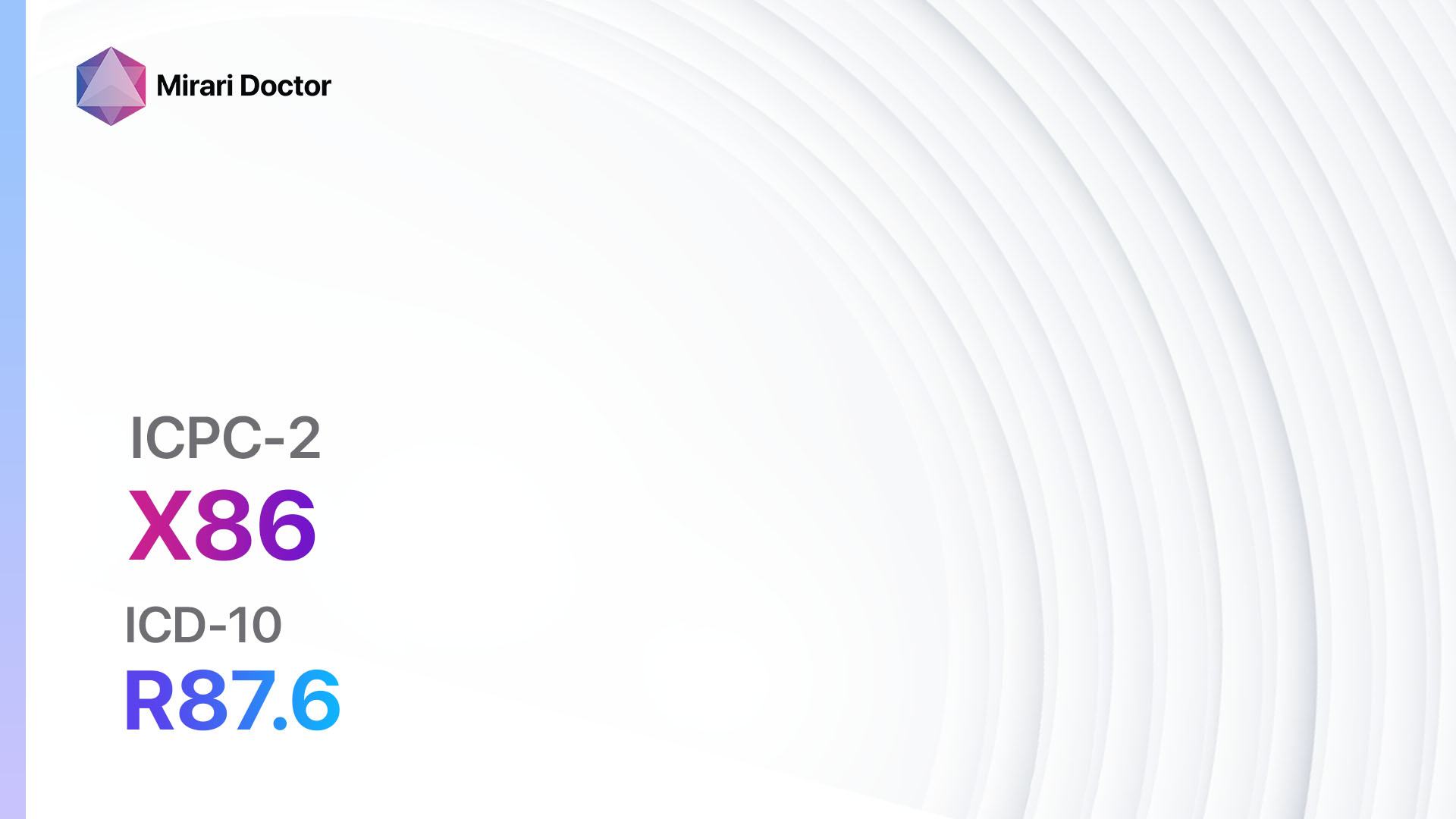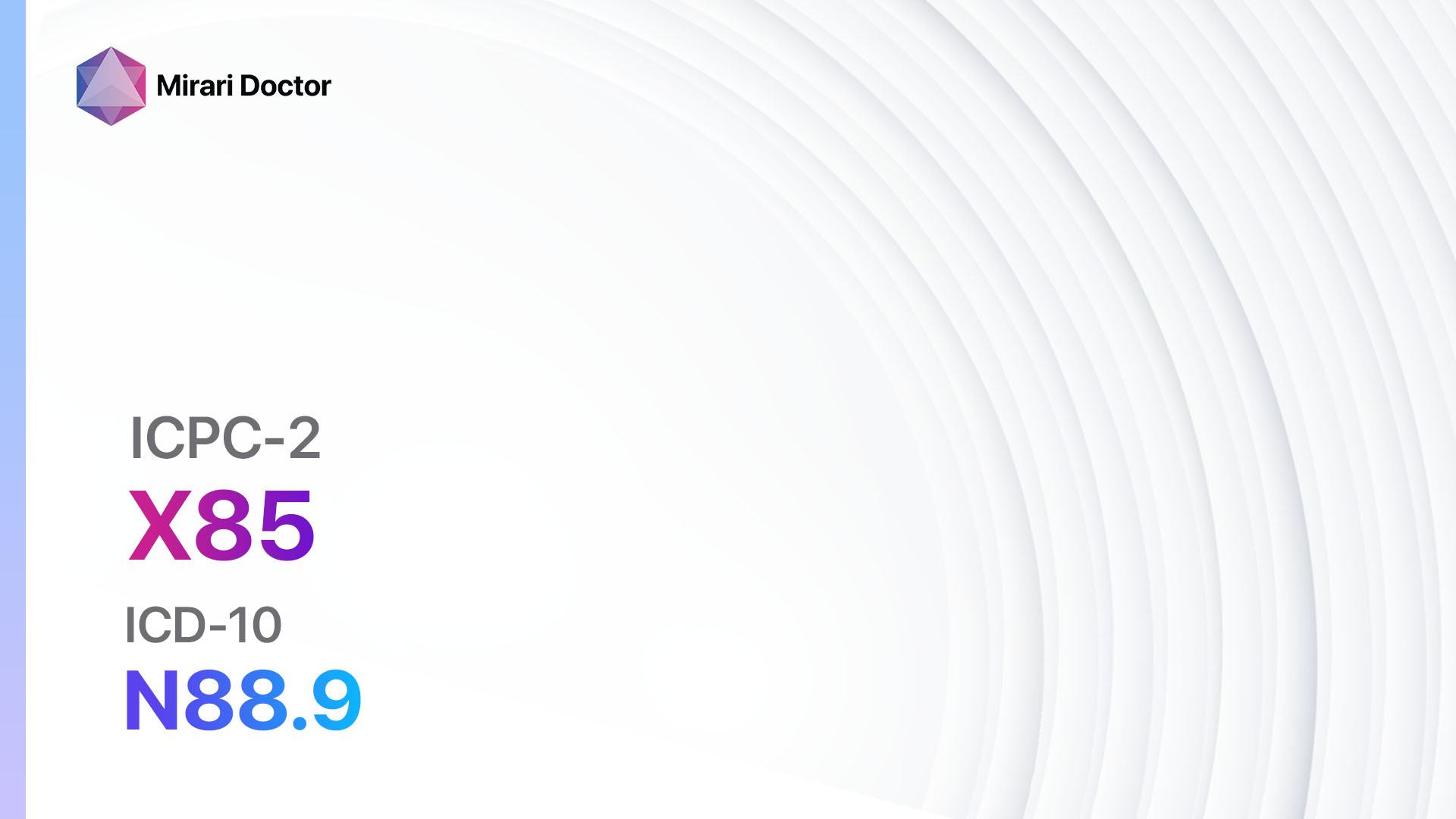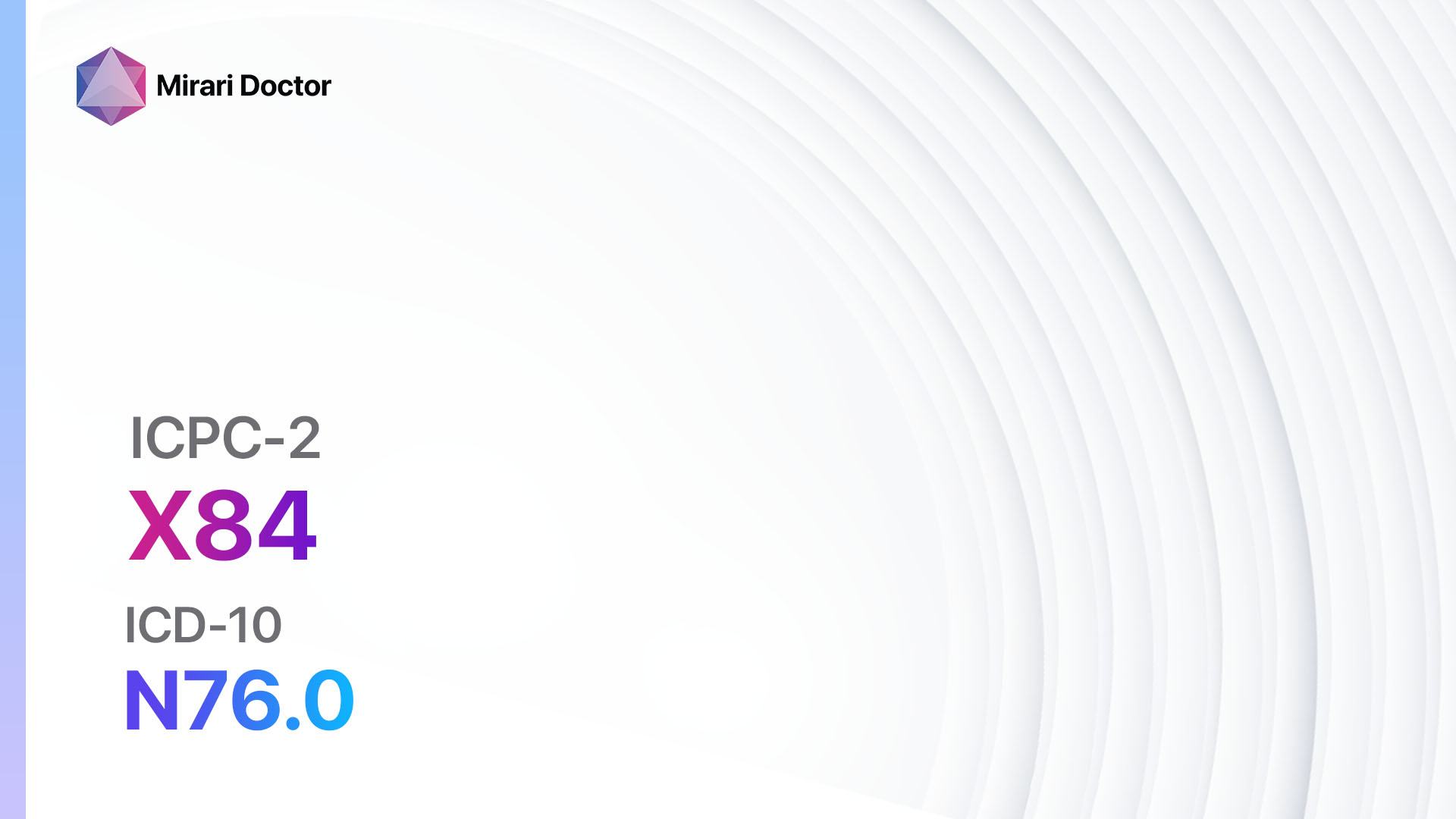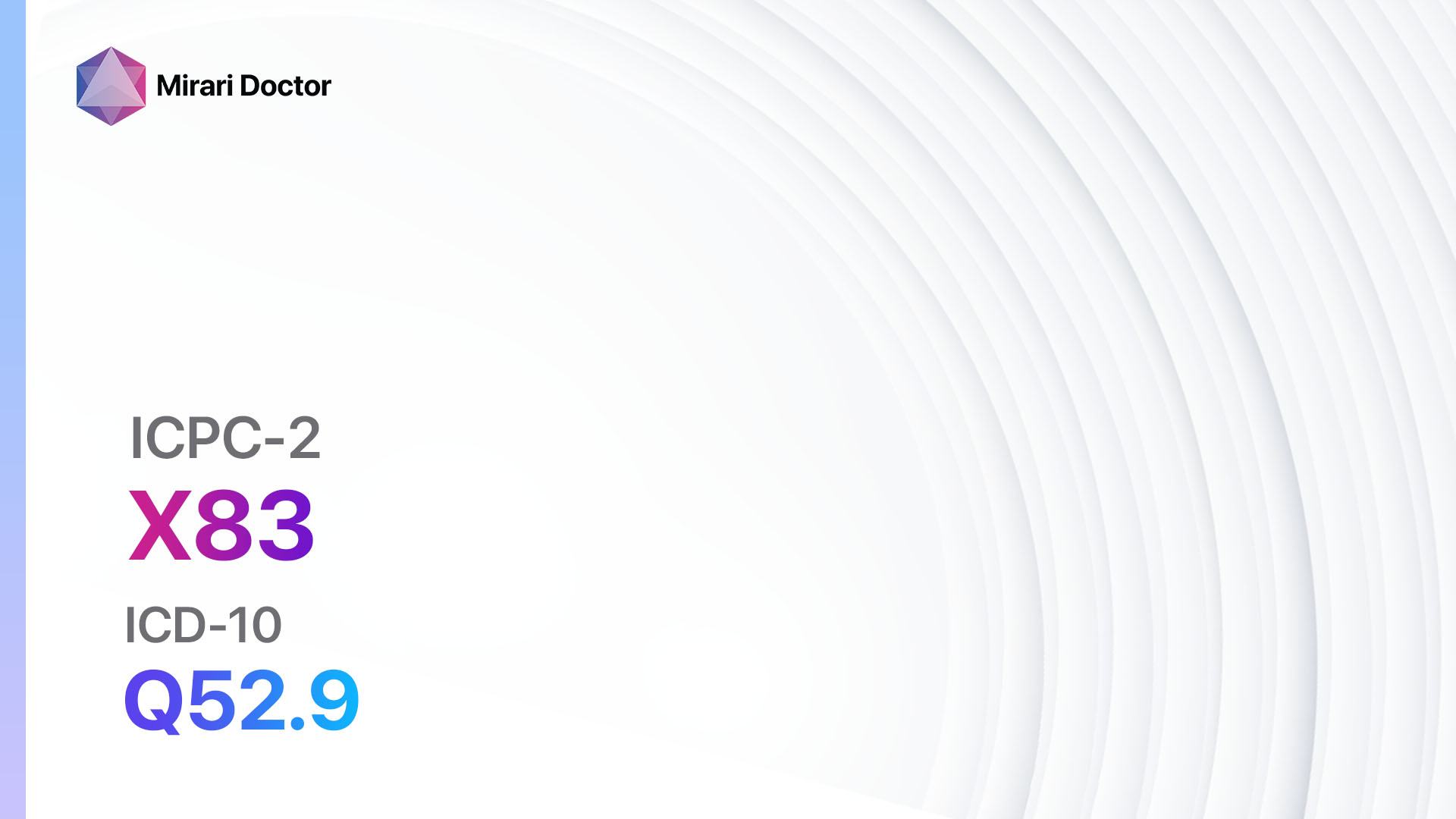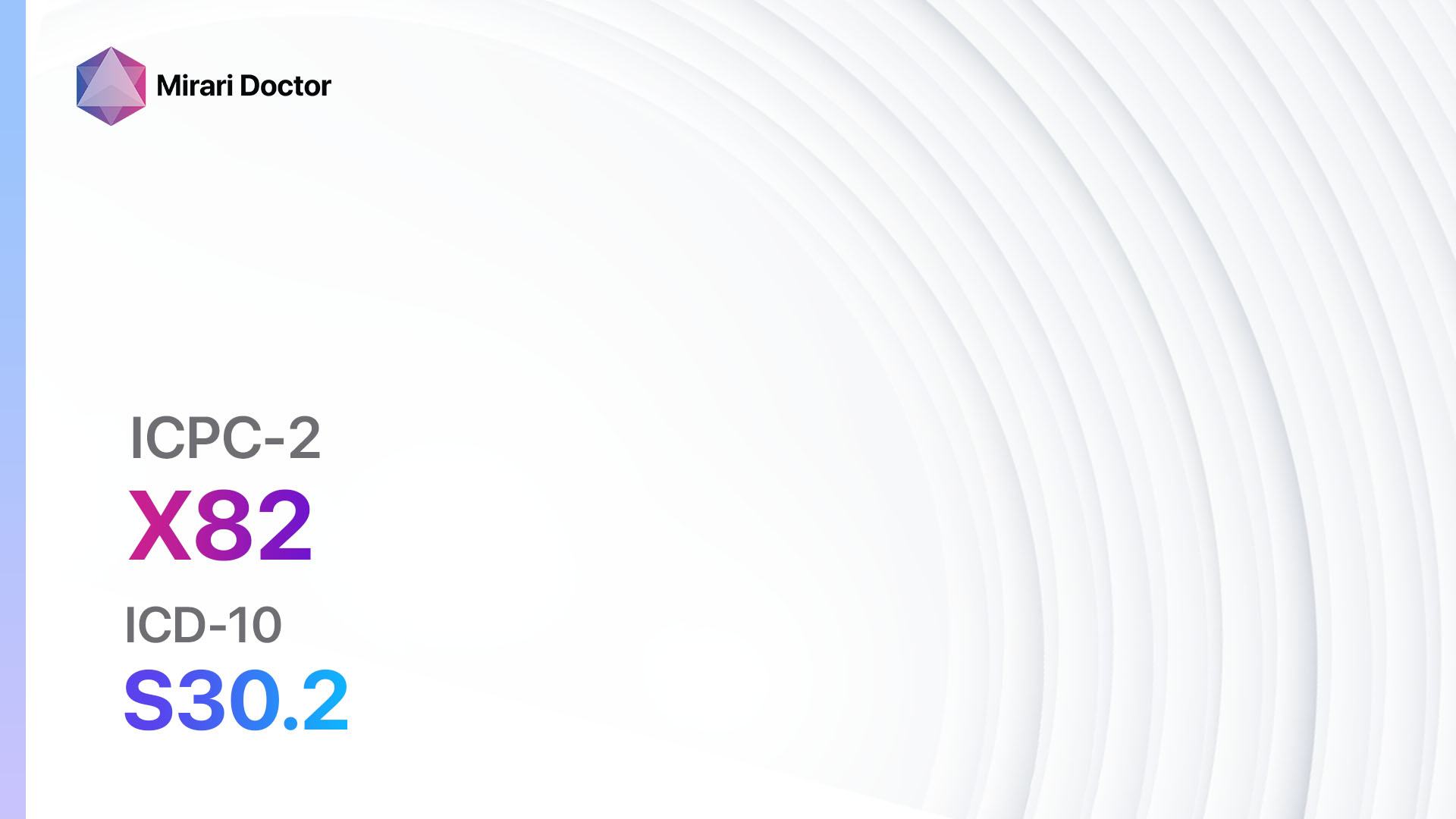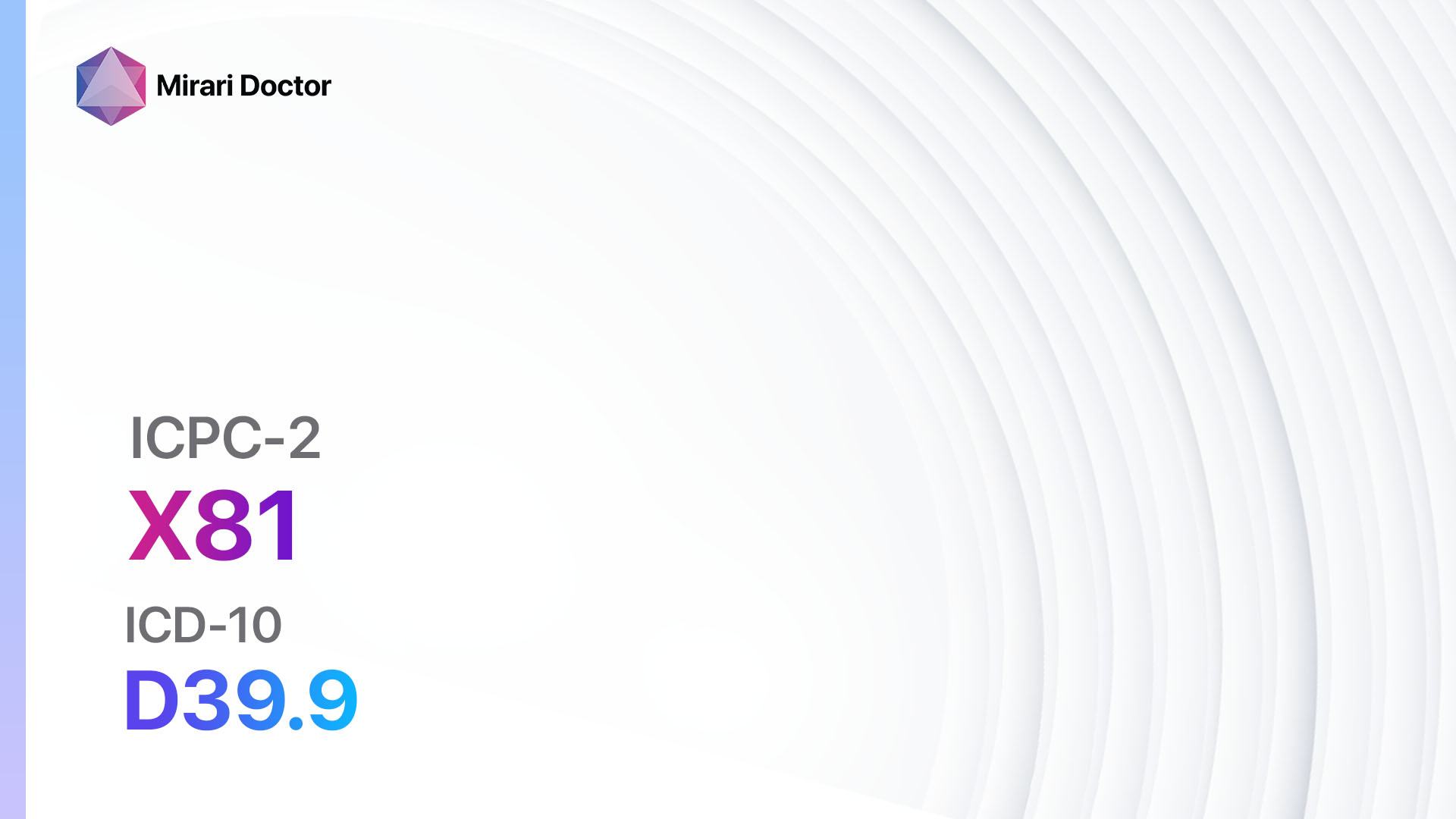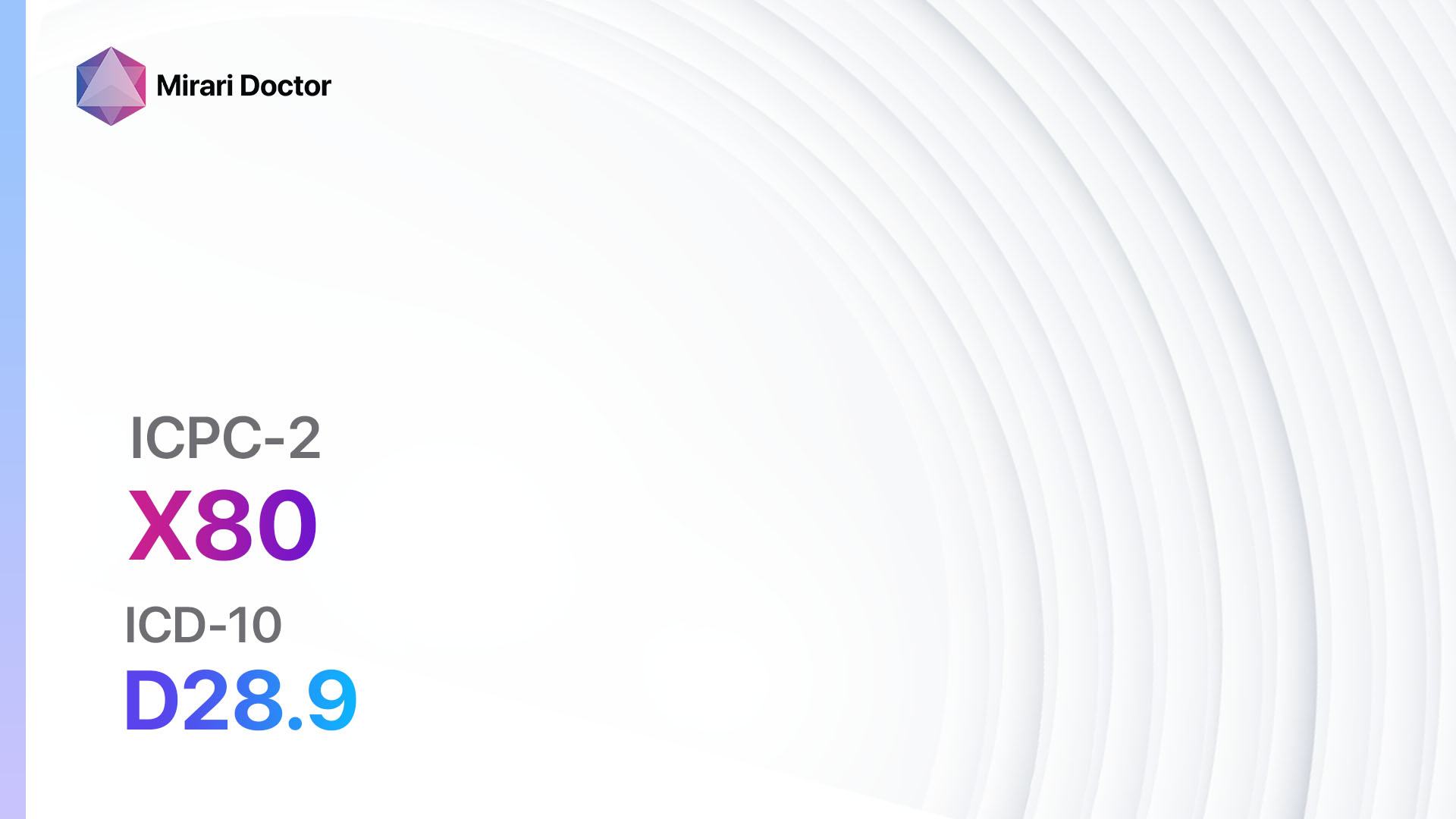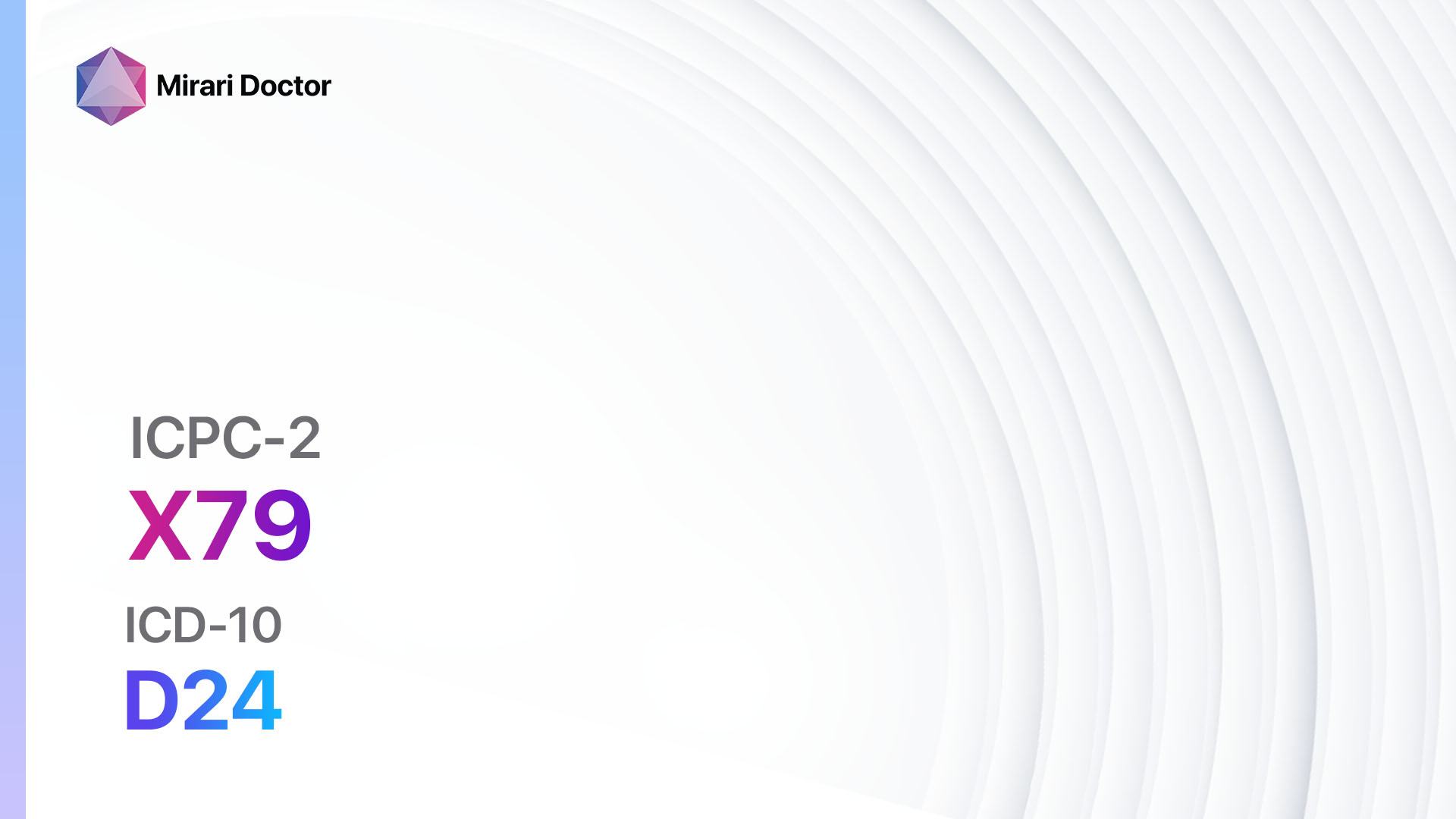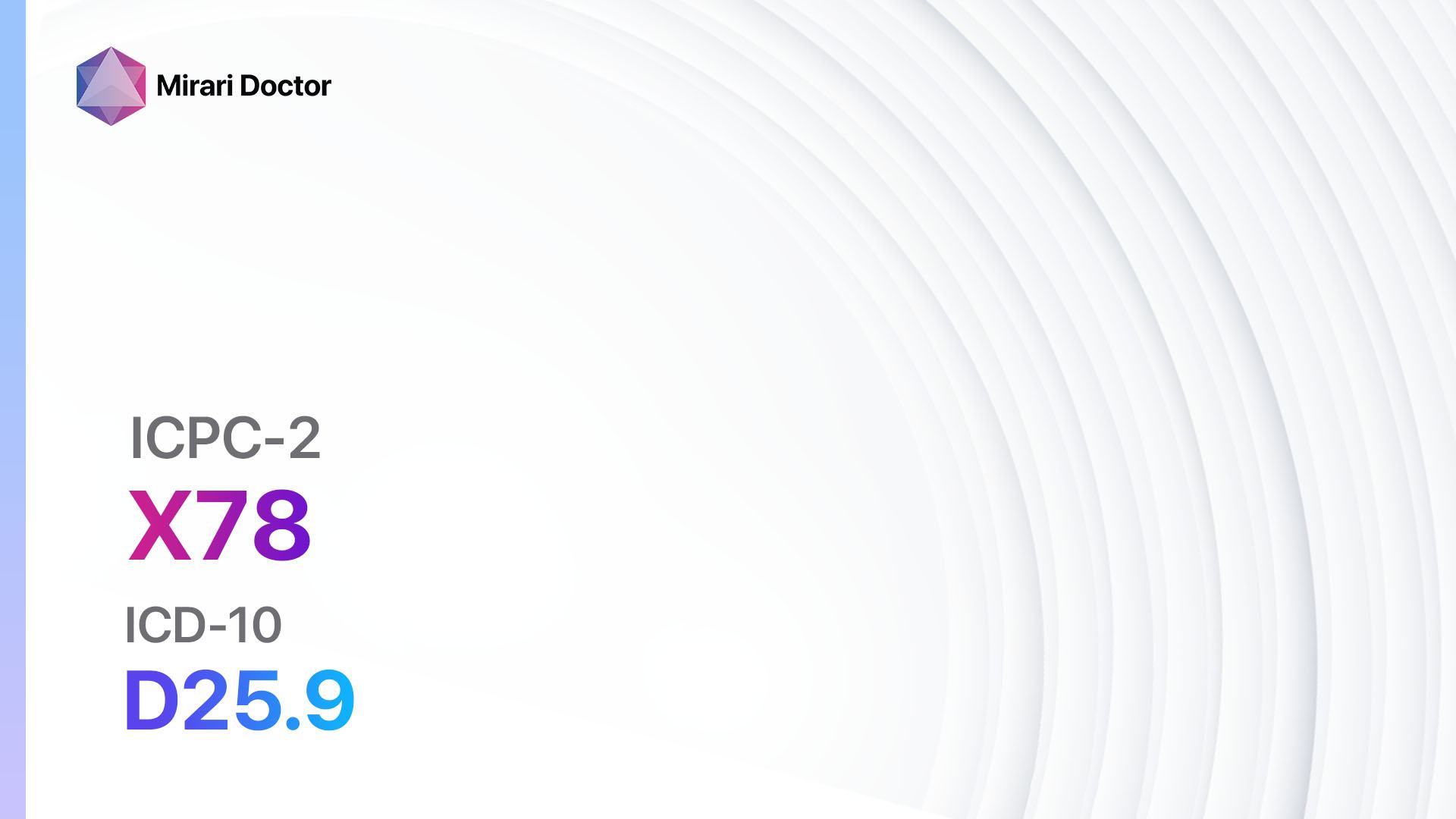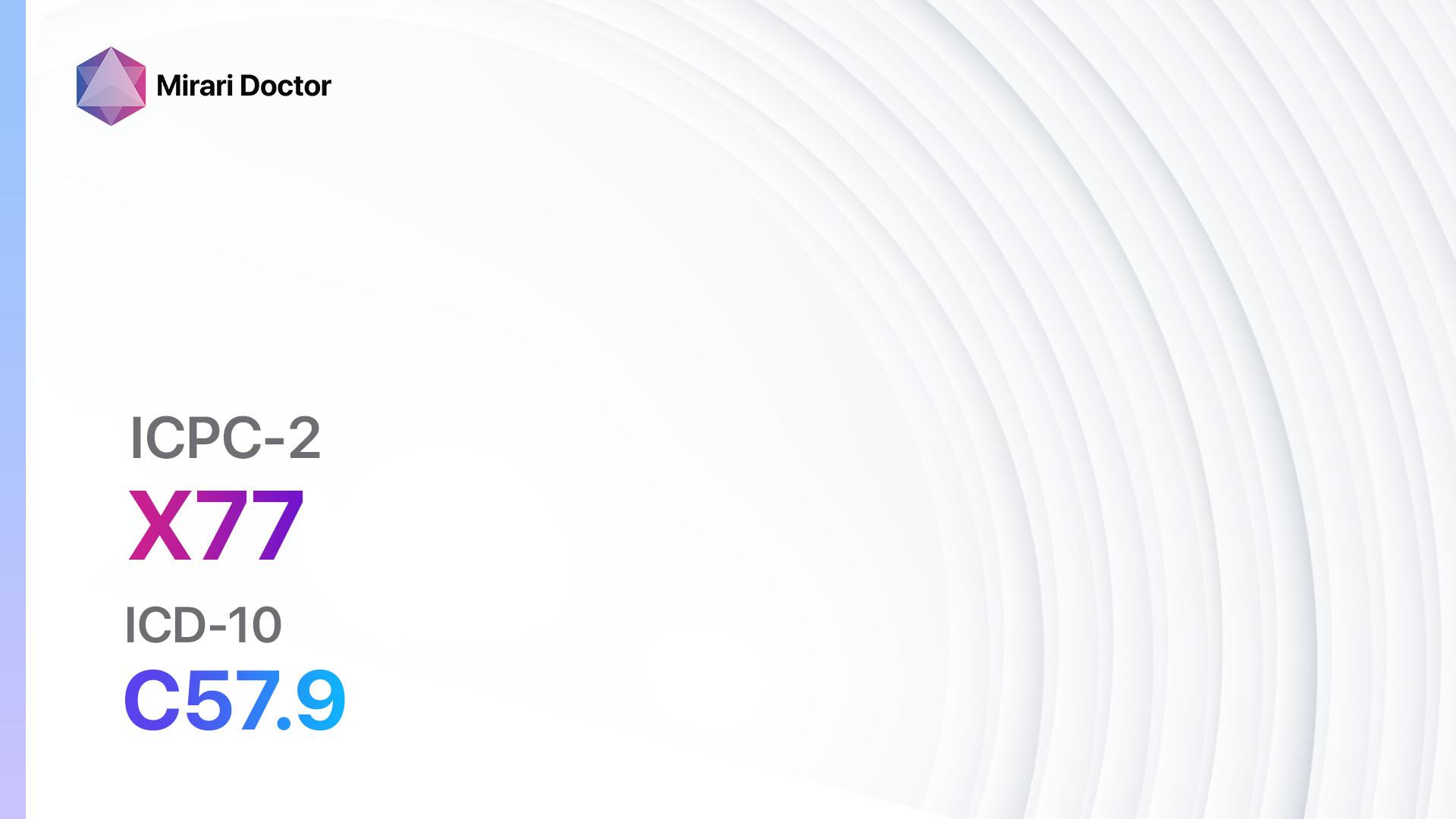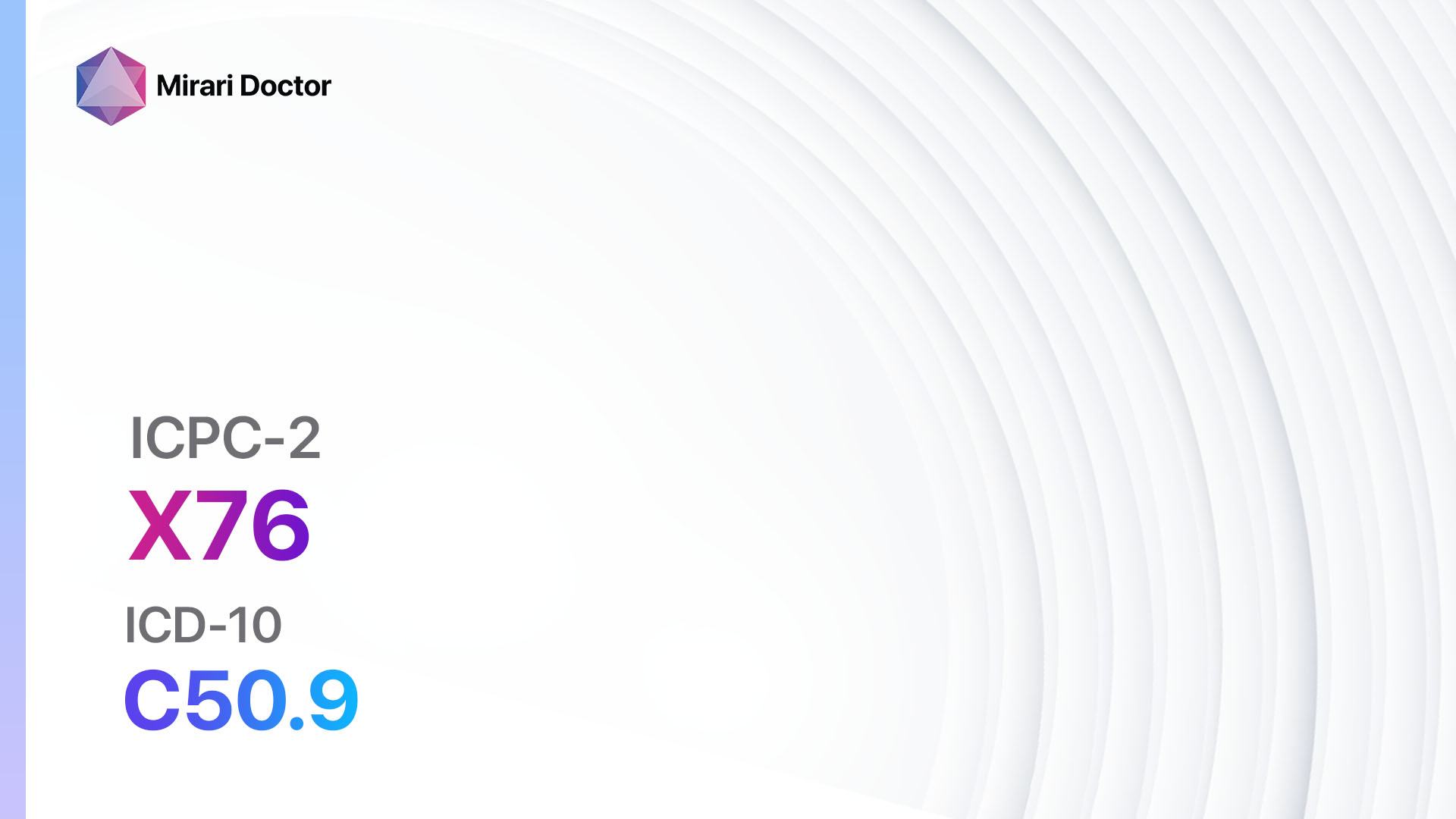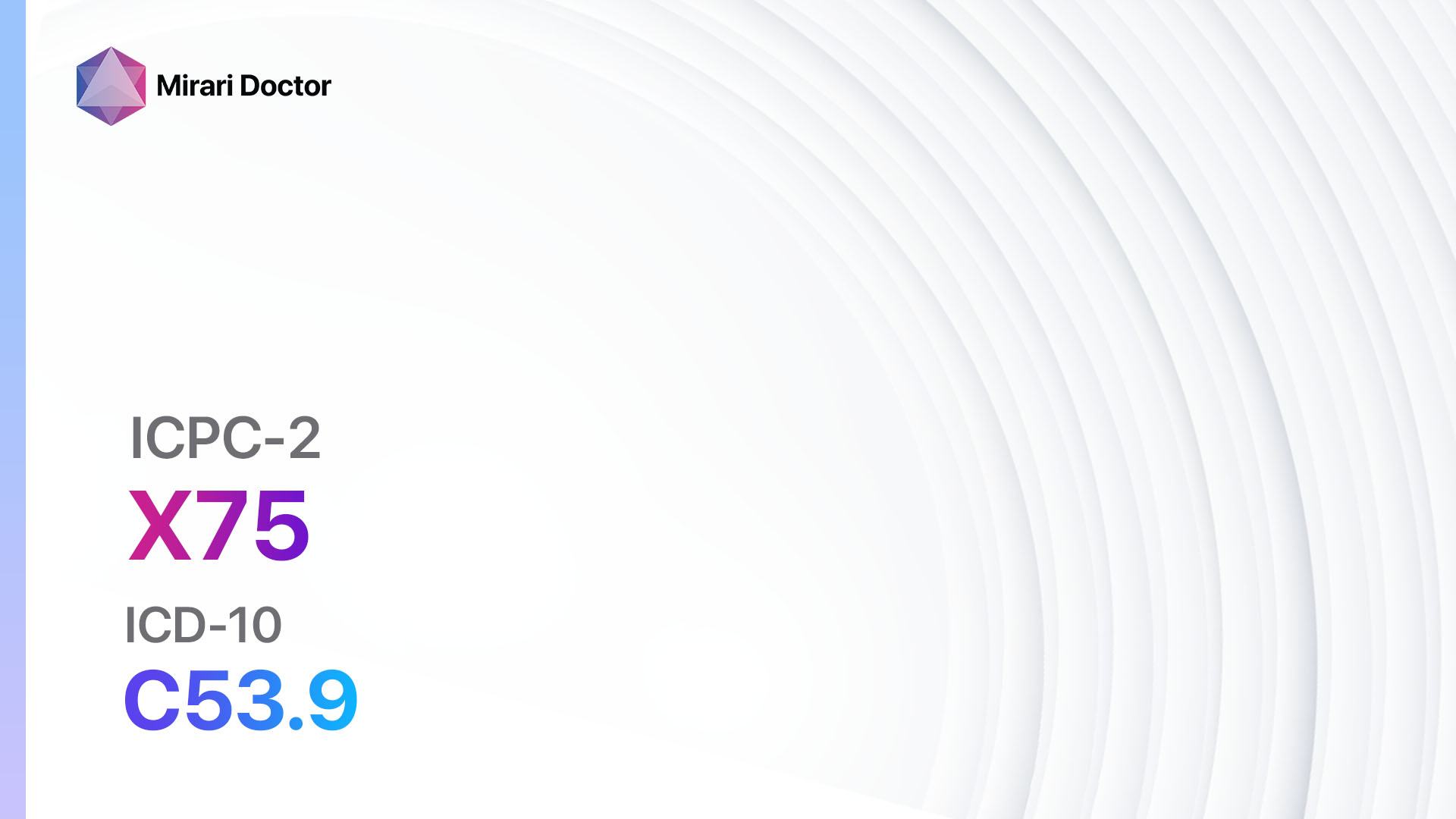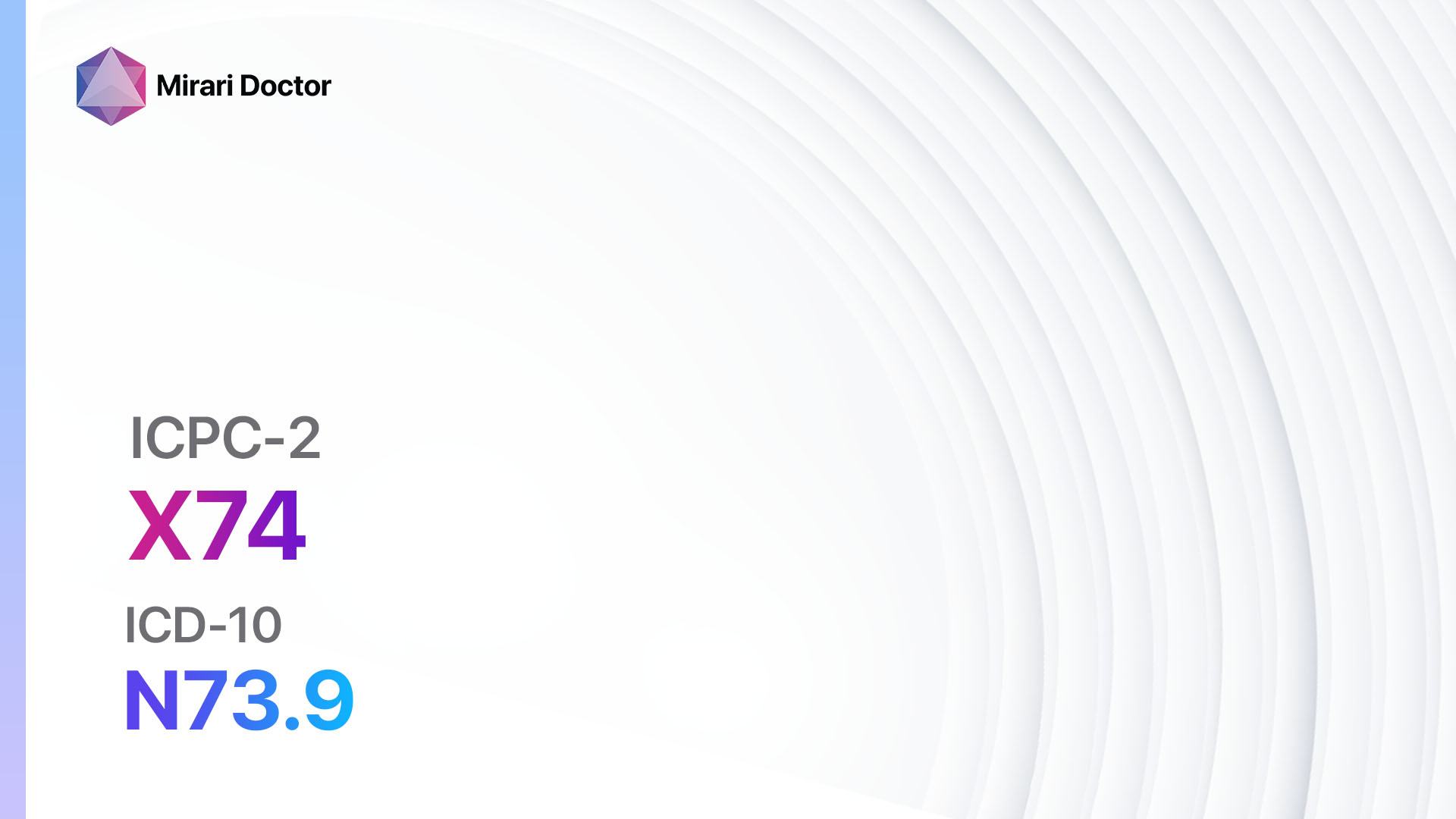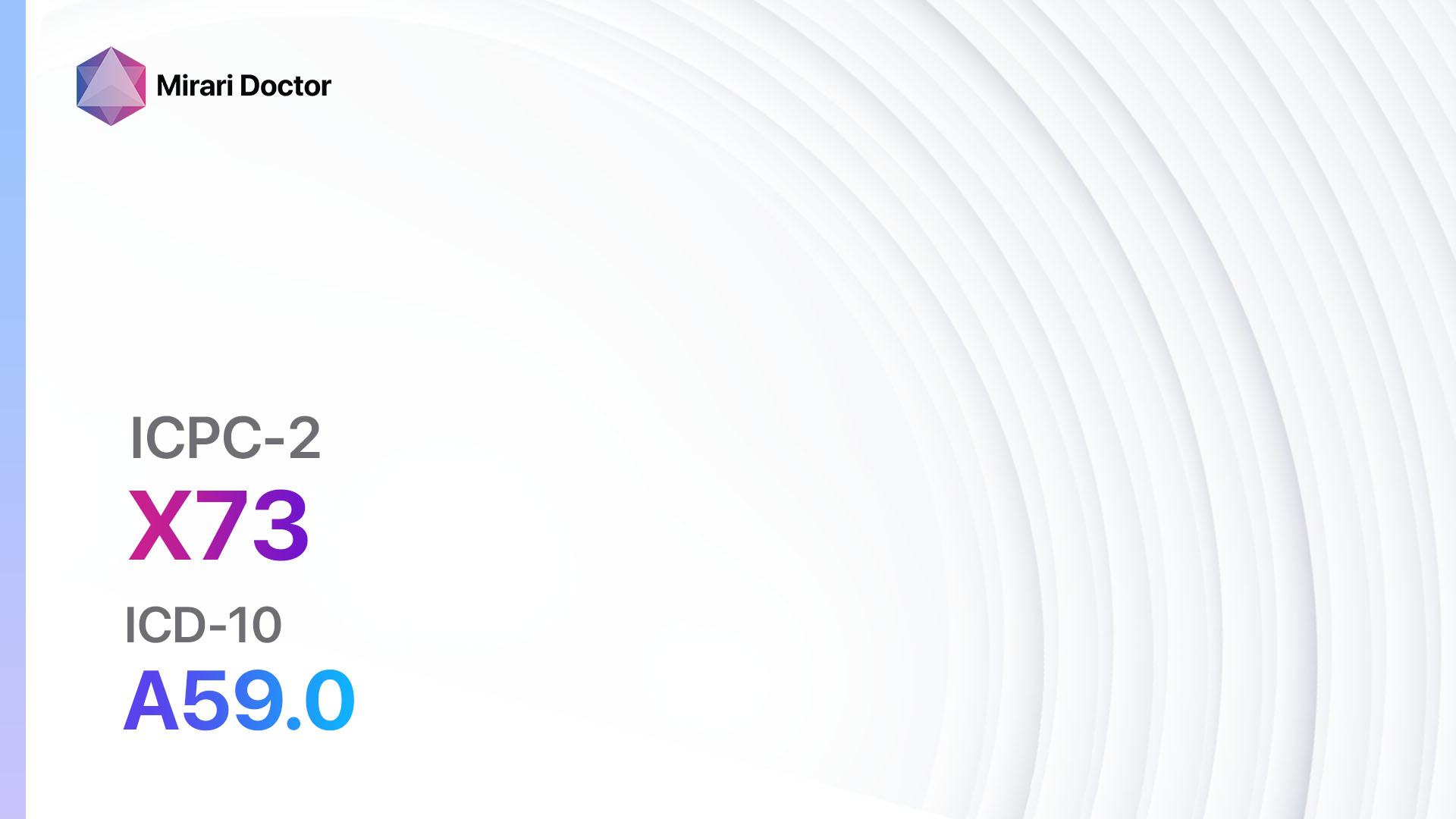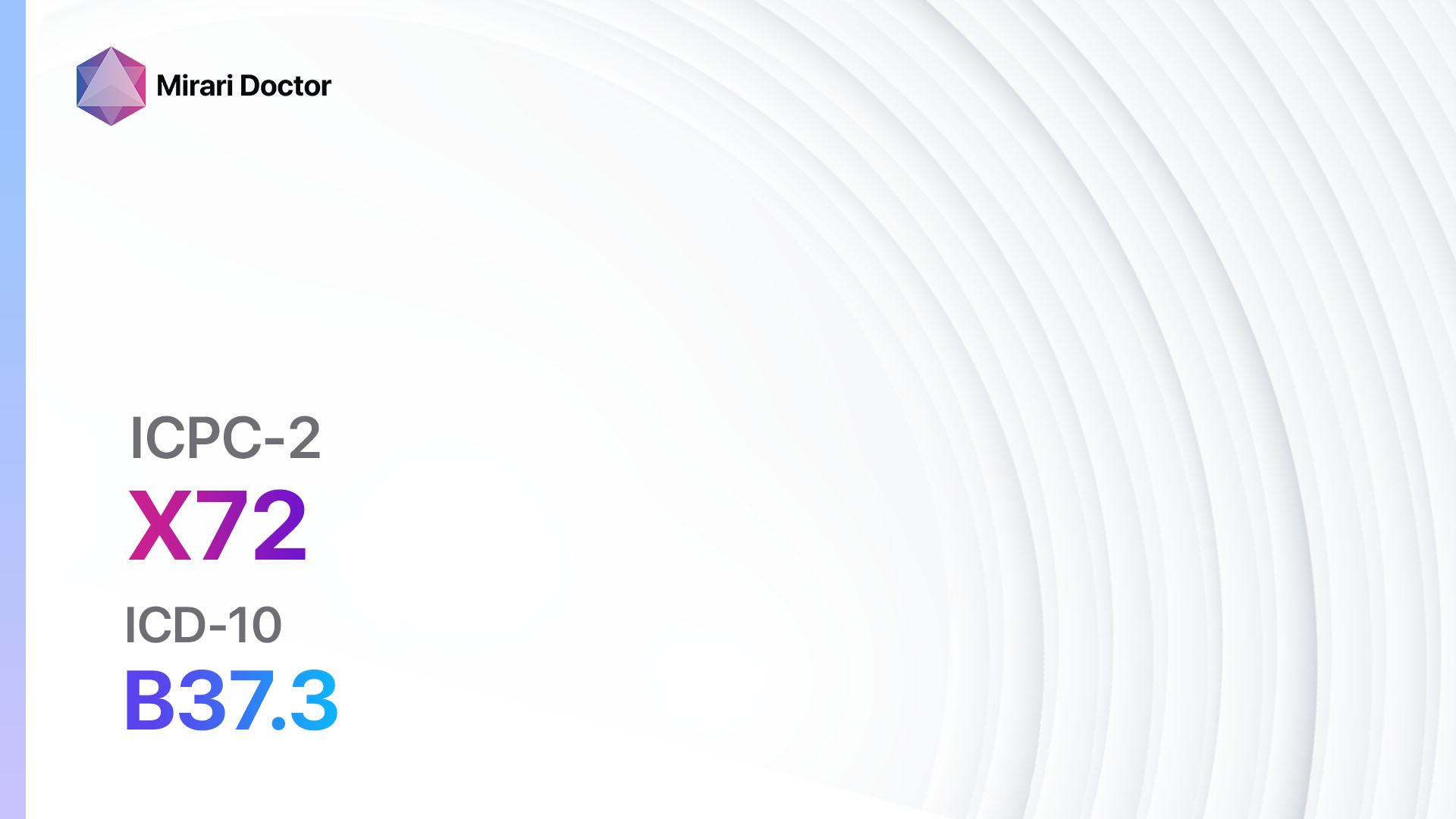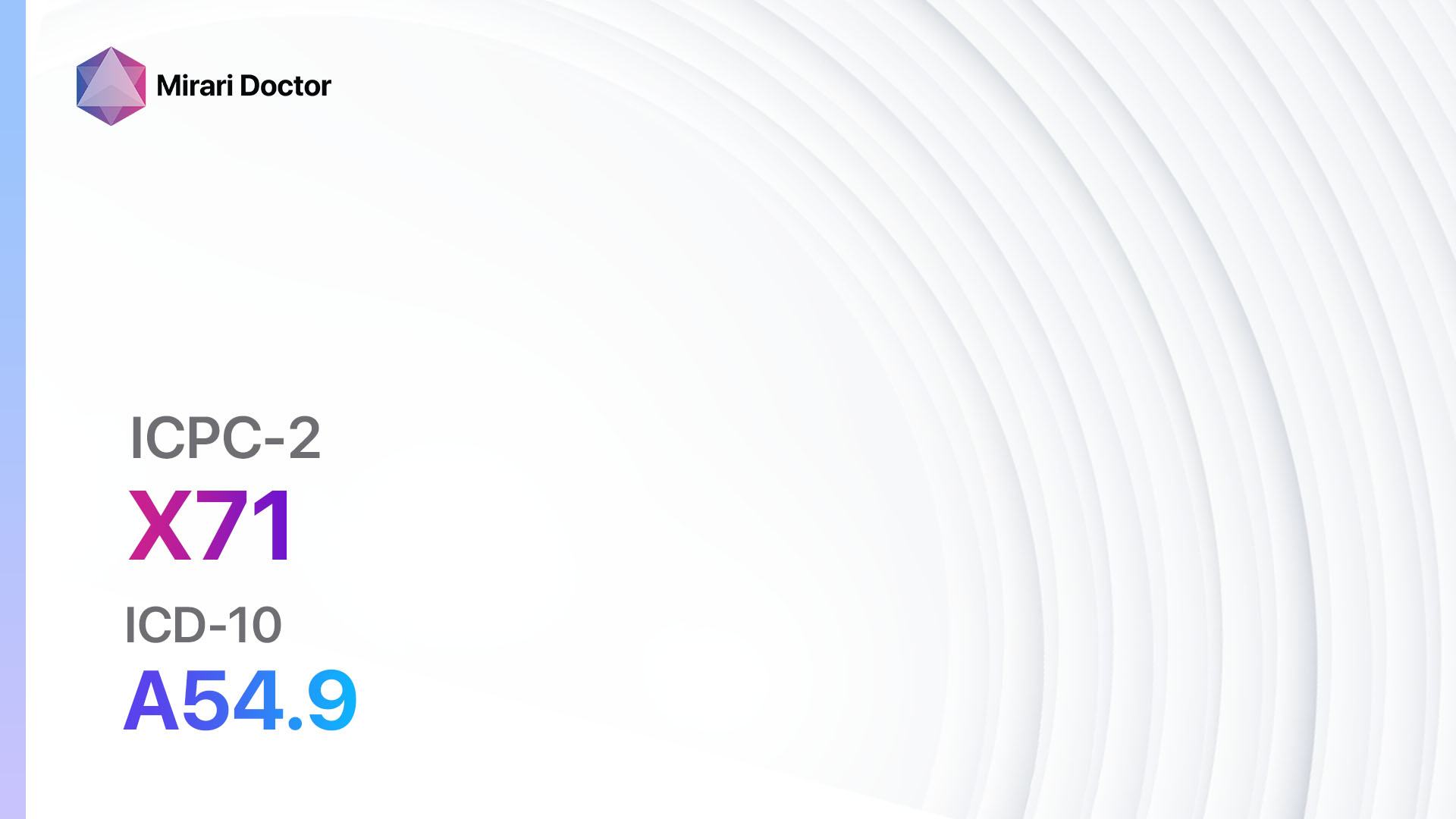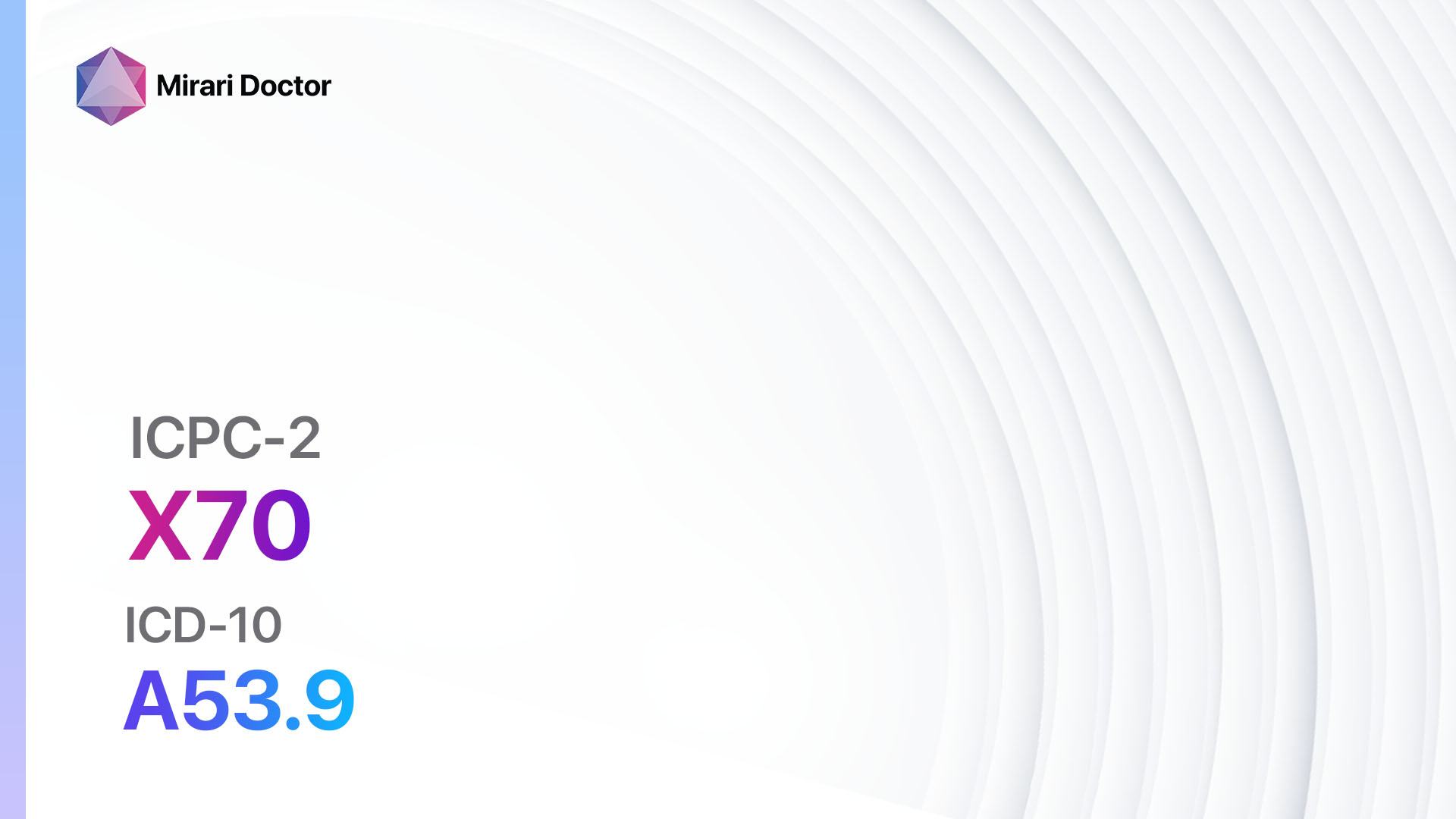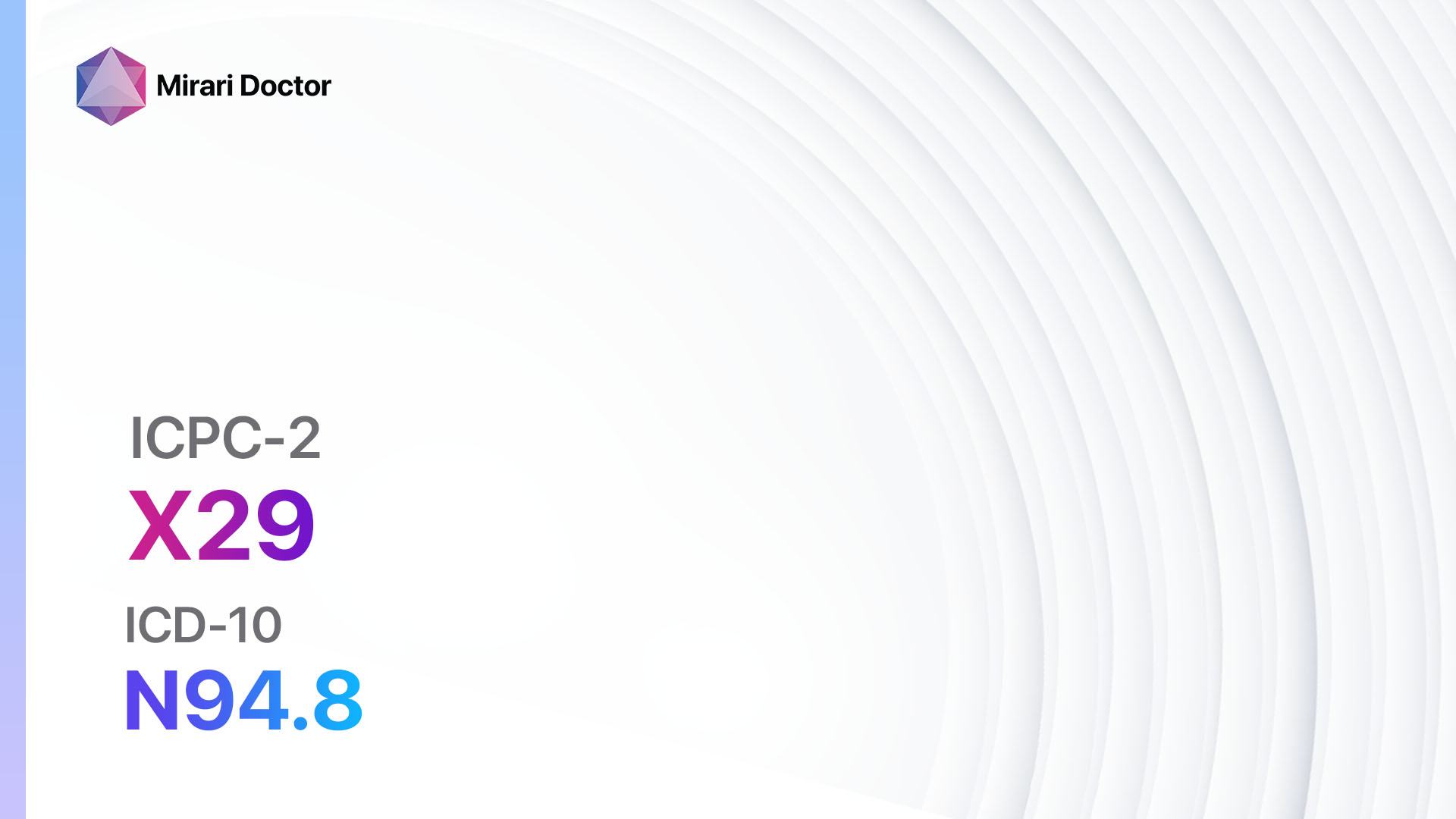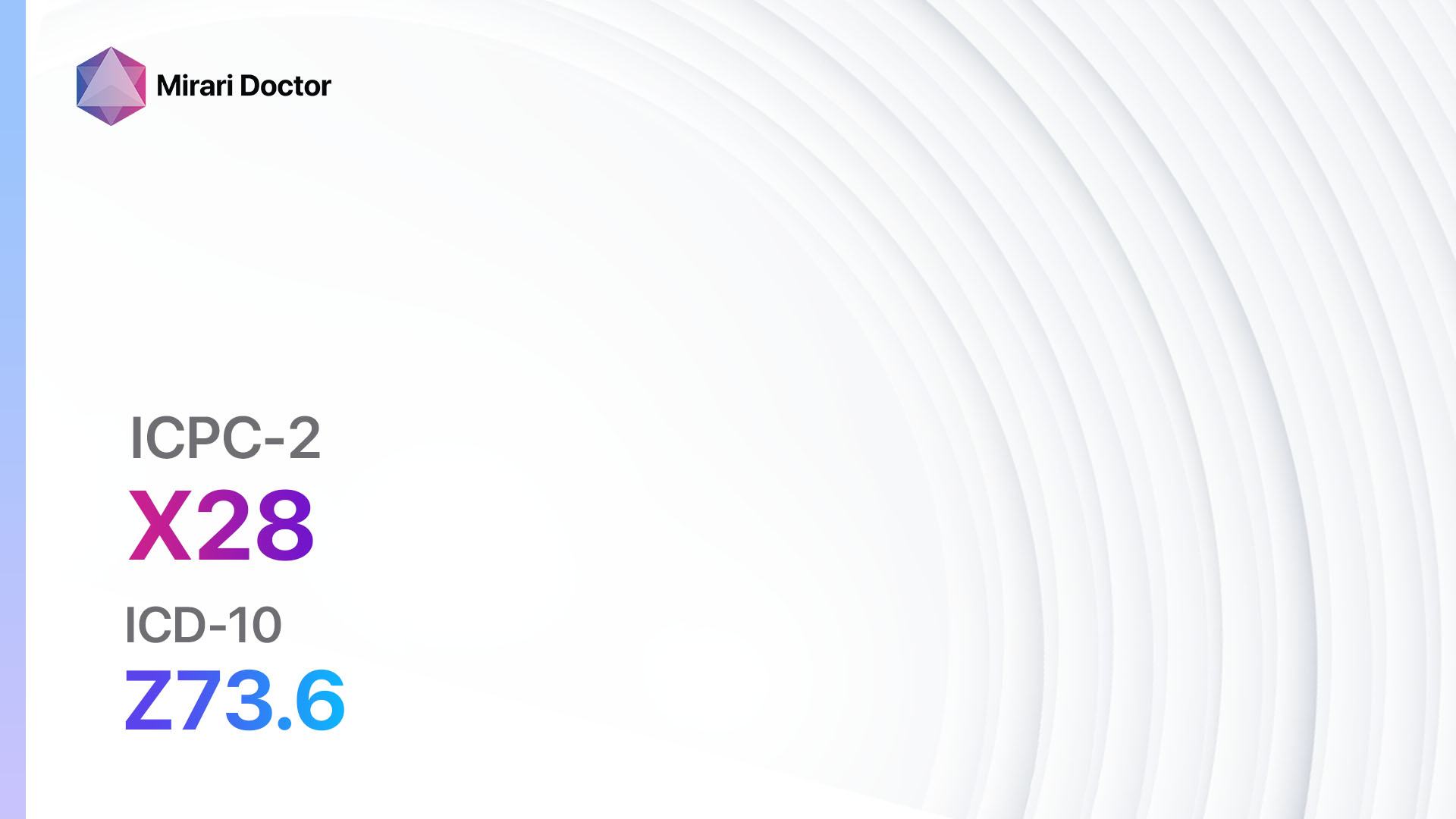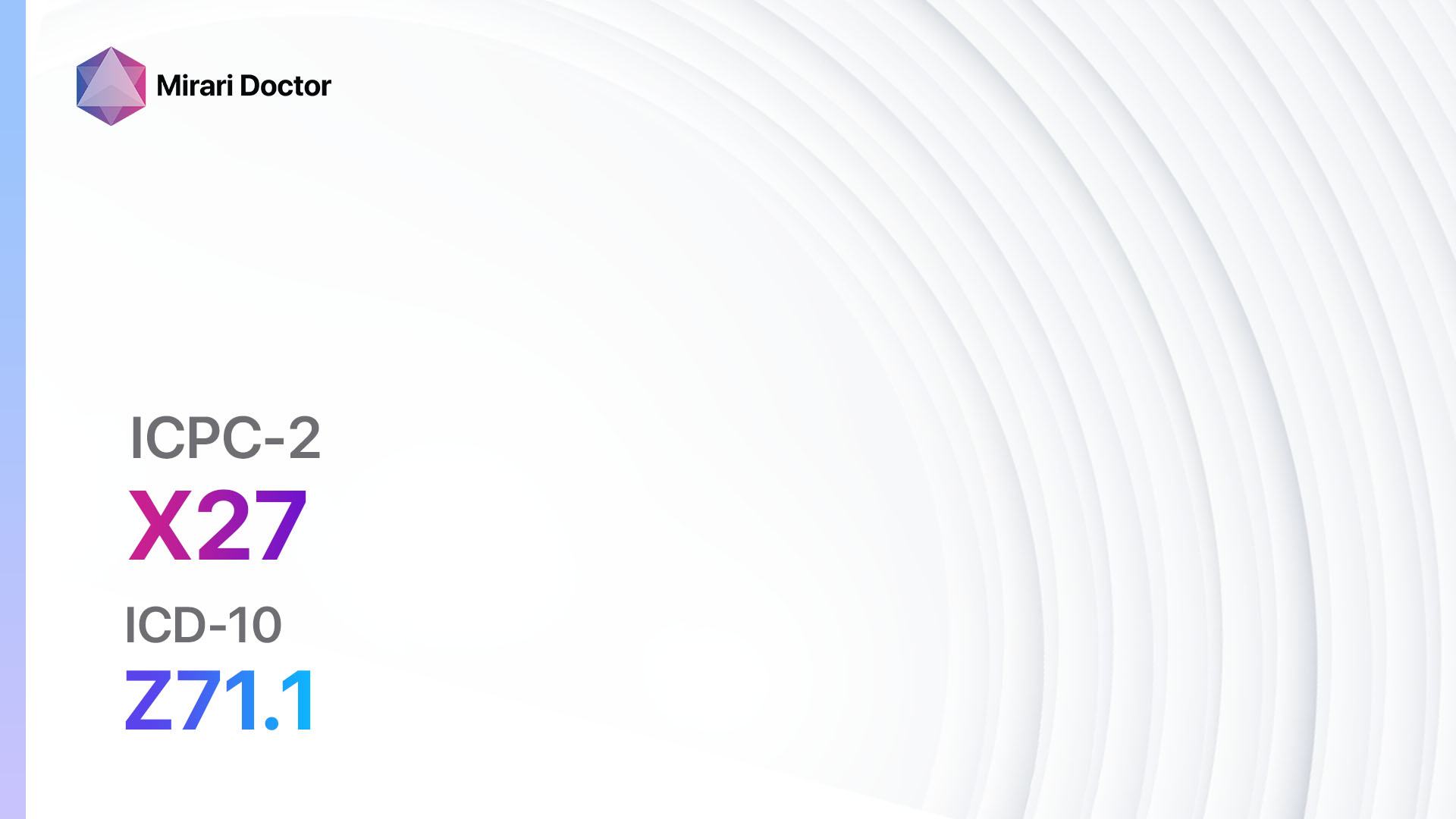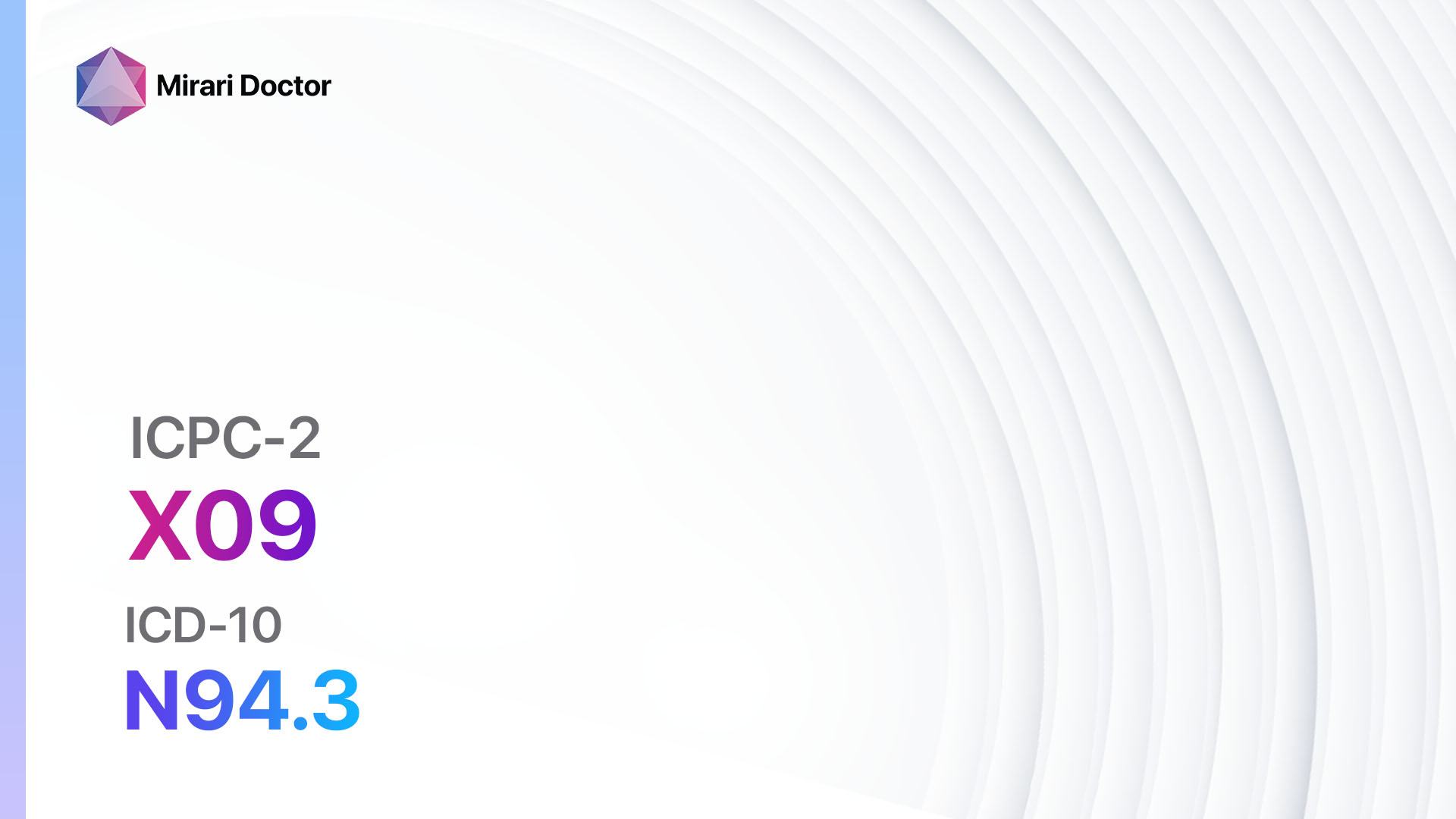
Introduction
Premenstrual symptoms are a common complaint among women of reproductive age. These symptoms occur in the days or weeks leading up to menstruation and can significantly impact a woman’s quality of life[1]. This guide aims to provide healthcare professionals with a comprehensive approach to diagnosing and managing premenstrual symptoms.
Codes
- ICPC-2 Code: X09 Premenstrual symptom/complaint[2]
- ICD-10 Code: N94.3 Premenstrual tension syndrome[3]
Symptoms
- Mood swings: Women may experience irritability, anxiety, or depression.
- Physical symptoms: These may include bloating, breast tenderness, and headaches.
- Fatigue: Many women report feeling tired or lacking energy.
- Changes in appetite: Some women may experience food cravings or increased appetite.
- Sleep disturbances: Insomnia or excessive sleepiness may occur.
- Cognitive symptoms: Difficulty concentrating or forgetfulness may be present[4].
Causes
- Hormonal fluctuations: Changes in estrogen and progesterone levels can contribute to premenstrual symptoms.
- Serotonin imbalance: Serotonin, a neurotransmitter, plays a role in mood regulation. Imbalances in serotonin levels may contribute to mood swings.
- Genetic factors: Some women may be more genetically predisposed to experiencing premenstrual symptoms.
- Environmental factors: Stress, lack of exercise, and poor diet can exacerbate premenstrual symptoms[5].
Diagnostic Steps
Medical History
- Gather information about the patient’s menstrual cycle, including the regularity and length of their periods.
- Ask about the specific symptoms experienced and their severity.
- Inquire about any previous diagnoses or treatments for premenstrual symptoms.
- Assess for any underlying medical conditions or medications that may contribute to the symptoms[6].
Physical Examination
- Perform a general physical examination to assess overall health.
- Focus on specific signs or findings that may be indicative of premenstrual symptoms, such as breast tenderness or bloating[7].
Laboratory Tests
- Hormone levels: Measure estrogen and progesterone levels to assess for hormonal imbalances.
- Thyroid function tests: Evaluate thyroid function, as thyroid disorders can contribute to premenstrual symptoms.
- Complete blood count: Rule out anemia or other blood disorders that may cause fatigue[8].
Diagnostic Imaging
- Imaging studies are not typically necessary for the diagnosis of premenstrual symptoms[9].
Other Tests
- Psychological assessment: Consider referring the patient to a mental health professional for further evaluation if symptoms of depression or anxiety are present[10].
Follow-up and Patient Education
- Schedule regular follow-up appointments to monitor symptom progression and treatment effectiveness.
- Provide education on lifestyle modifications and self-care strategies to manage premenstrual symptoms[1].
Possible Interventions
Traditional Interventions
Medications:
Top 5 drugs for Premenstrual Symptoms:
- Selective serotonin reuptake inhibitors (SSRIs) (e.g., Fluoxetine, Sertraline):
- Cost: Generic versions can be $10-$50/month.
- Contraindications: Hypersensitivity to SSRIs, concurrent use of monoamine oxidase inhibitors (MAOIs).
- Side effects: Nausea, headache, insomnia.
- Severe side effects: Serotonin syndrome, suicidal thoughts.
- Drug interactions: MAOIs, other serotonergic drugs.
- Warning: May take several weeks to see full benefits.
- Nonsteroidal anti-inflammatory drugs (NSAIDs) (e.g., Ibuprofen, Naproxen):
- Cost: Generic versions are typically <$10/month.
- Contraindications: Active peptic ulcer disease, history of gastrointestinal bleeding.
- Side effects: Upset stomach, heartburn.
- Severe side effects: Gastrointestinal bleeding, kidney problems.
- Drug interactions: Anticoagulants, other NSAIDs.
- Warning: Should be taken with food to minimize gastrointestinal side effects.
- Oral contraceptives (e.g., Ethinyl estradiol and levonorgestrel):
- Cost: Generic versions can be $20-$50/month.
- Contraindications: History of blood clots, certain types of cancer.
- Side effects: Nausea, breast tenderness, breakthrough bleeding.
- Severe side effects: Blood clots, stroke.
- Drug interactions: Certain antibiotics, anticonvulsants.
- Warning: Regular monitoring of blood pressure and cholesterol levels is recommended.
- Diuretics (e.g., Spironolactone):
- Cost: Generic versions can be $10-$30/month.
- Contraindications: Hyperkalemia, anuria.
- Side effects: Increased urination, dizziness.
- Severe side effects: Electrolyte imbalances, allergic reactions.
- Drug interactions: ACE inhibitors, potassium supplements.
- Warning: Regular monitoring of electrolyte levels is necessary.
- Calcium supplements (e.g., Calcium carbonate):
- Cost: Generic versions are typically <$10/month.
- Contraindications: Hypercalcemia, kidney stones.
- Side effects: Constipation, upset stomach.
- Severe side effects: Hypercalcemia, kidney problems.
- Drug interactions: Certain antibiotics, bisphosphonates.
- Warning: Should be taken with food to enhance absorption.
Alternative Drugs:
- Vitamin B6 (Pyridoxine): May help alleviate symptoms of premenstrual syndrome.
- Magnesium: Some evidence suggests that magnesium supplementation may reduce premenstrual symptoms.
- Herbal supplements: Certain herbs, such as chasteberry and evening primrose oil, have been used to manage premenstrual symptoms. However, their efficacy is not well-established.
Surgical Procedures:
- Surgical interventions are not typically indicated for the management of premenstrual symptoms.
Alternative Interventions
- Exercise: Regular physical activity, such as aerobic exercises or yoga, may help reduce premenstrual symptoms. Cost: Varies (e.g., gym membership, yoga classes).
- Dietary modifications: Encourage a balanced diet rich in fruits, vegetables, whole grains, and lean proteins. Limiting caffeine, alcohol, and salt intake may also be beneficial. Cost: Varies depending on food choices.
- Stress management techniques: Teach relaxation techniques, such as deep breathing exercises, meditation, or mindfulness. Cost: Free or minimal cost.
- Acupuncture: Some studies suggest that acupuncture may help alleviate premenstrual symptoms. Cost: $60-$120 per session.
- Cognitive-behavioral therapy (CBT): CBT can help individuals develop coping strategies for managing premenstrual symptoms. Cost: Varies depending on the therapist and location.
Lifestyle Interventions
- Ensure adequate sleep: Encourage a regular sleep schedule and good sleep hygiene practices. Cost: Free.
- Stress reduction: Teach stress management techniques, such as engaging in hobbies, practicing relaxation exercises, or seeking support from friends and family. Cost: Free or minimal cost.
- Healthy diet: Emphasize the importance of a balanced diet rich in fruits, vegetables, whole grains, and lean proteins. Cost: Varies depending on food choices.
- Regular exercise: Encourage regular physical activity, such as walking, jogging, or swimming. Cost: Free or minimal cost.
- Limit caffeine and alcohol intake: Advise reducing or eliminating caffeine and alcohol consumption, as they can exacerbate premenstrual symptoms. Cost: Varies depending on individual choices.
It is important to note that the cost ranges provided are approximate and may vary depending on the location and availability of the interventions.
Mirari Cold Plasma Alternative Intervention
Understanding Mirari Cold Plasma
- Safe and Non-Invasive Treatment: Mirari Cold Plasma is a safe and non-invasive treatment option for various skin conditions. It does not require incisions, minimizing the risk of scarring, bleeding, or tissue damage.
- Efficient Extraction of Foreign Bodies: Mirari Cold Plasma facilitates the removal of foreign bodies from the skin by degrading and dissociating organic matter, allowing easier access and extraction.
- Pain Reduction and Comfort: Mirari Cold Plasma has a local analgesic effect, providing pain relief during the treatment, making it more comfortable for the patient.
- Reduced Risk of Infection: Mirari Cold Plasma has antimicrobial properties, effectively killing bacteria and reducing the risk of infection.
- Accelerated Healing and Minimal Scarring: Mirari Cold Plasma stimulates wound healing and tissue regeneration, reducing healing time and minimizing the formation of scars.
Mirari Cold Plasma Prescription
Video instructions for using Mirari Cold Plasma Device – X09 Premenstrual symptom/complaint (ICD-10:N94.3)
| Mild | Moderate | Severe |
| Mode setting: 2 (Wound Healing) Location: 2 (Prostate & Uterus) Morning: 15 minutes, Evening: 15 minutes |
Mode setting: 2 (Wound Healing) Location: 2 (Prostate & Uterus) Morning: 30 minutes, Lunch: 30 minutes, Evening: 30 minutes |
Mode setting: 2 (Wound Healing) Location: 2 (Prostate & Uterus) Morning: 30 minutes, Lunch: 30 minutes, Evening: 30 minutes |
| Mode setting: 7 (Immunotherapy) Location: 1 (Sacrum) Morning: 15 minutes, Evening: 15 minutes |
Mode setting: 7 (Immunotherapy) Location: 1 (Sacrum) Morning: 30 minutes, Lunch: 30 minutes, Evening: 30 minutes |
Mode setting: 7 (Immunotherapy) Location: 1 (Sacrum) Morning: 30 minutes, Lunch: 30 minutes, Evening: 30 minutes |
| Total Morning: 30 minutes approx. $5 USD, Evening: 30 minutes approx. $5 USD |
Total Morning: 60 minutes approx. $10 USD, Lunch: 60 minutes approx. $10 USD, Evening: 60 minutes approx. $10 USD, |
Total Morning: 60 minutes approx. $10 USD, Lunch: 60 minutes approx. $10 USD, Evening: 60 minutes approx. $10 USD, |
| Usual treatment for 7-60 days approx. $70 USD – $600 USD | Usual treatment for 6-8 weeks approx. $1,260 USD – $1,680 USD |
Usual treatment for 3-6 months approx. $2,700 USD – $5,400 USD
|
 |
|
Use the Mirari Cold Plasma device to treat Premenstrual symptom/complaint effectively.
WARNING: MIRARI COLD PLASMA IS DESIGNED FOR THE HUMAN BODY WITHOUT ANY ARTIFICIAL OR THIRD PARTY PRODUCTS. USE OF OTHER PRODUCTS IN COMBINATION WITH MIRARI COLD PLASMA MAY CAUSE UNPREDICTABLE EFFECTS, HARM OR INJURY. PLEASE CONSULT A MEDICAL PROFESSIONAL BEFORE COMBINING ANY OTHER PRODUCTS WITH USE OF MIRARI.
Step 1: Cleanse the Skin
- Start by cleaning the affected area of the skin with a gentle cleanser or mild soap and water. Gently pat the area dry with a clean towel.
Step 2: Prepare the Mirari Cold Plasma device
- Ensure that the Mirari Cold Plasma device is fully charged or has fresh batteries as per the manufacturer’s instructions. Make sure the device is clean and in good working condition.
- Switch on the Mirari device using the power button or by following the specific instructions provided with the device.
- Some Mirari devices may have adjustable settings for intensity or treatment duration. Follow the manufacturer’s instructions to select the appropriate settings based on your needs and the recommended guidelines.
Step 3: Apply the Device
- Place the Mirari device in direct contact with the affected area of the skin. Gently glide or hold the device over the skin surface, ensuring even coverage of the area experiencing.
- Slowly move the Mirari device in a circular motion or follow a specific pattern as indicated in the user manual. This helps ensure thorough treatment coverage.
Step 4: Monitor and Assess:
- Keep track of your progress and evaluate the effectiveness of the Mirari device in managing your Premenstrual symptom/complaint. If you have any concerns or notice any adverse reactions, consult with your health care professional.
Note
This guide is for informational purposes only and should not replace the advice of a medical professional. Always consult with your healthcare provider or a qualified medical professional for personal advice, diagnosis, or treatment. Do not solely rely on the information presented here for decisions about your health. Use of this information is at your own risk. The authors of this guide, nor any associated entities or platforms, are not responsible for any potential adverse effects or outcomes based on the content.
Mirari Cold Plasma System Disclaimer
- Purpose: The Mirari Cold Plasma System is a Class 2 medical device designed for use by trained healthcare professionals. It is registered for use in Thailand and Vietnam. It is not intended for use outside of these locations.
- Informational Use: The content and information provided with the device are for educational and informational purposes only. They are not a substitute for professional medical advice or care.
- Variable Outcomes: While the device is approved for specific uses, individual outcomes can differ. We do not assert or guarantee specific medical outcomes.
- Consultation: Prior to utilizing the device or making decisions based on its content, it is essential to consult with a Certified Mirari Tele-Therapist and your medical healthcare provider regarding specific protocols.
- Liability: By using this device, users are acknowledging and accepting all potential risks. Neither the manufacturer nor the distributor will be held accountable for any adverse reactions, injuries, or damages stemming from its use.
- Geographical Availability: This device has received approval for designated purposes by the Thai and Vietnam FDA. As of now, outside of Thailand and Vietnam, the Mirari Cold Plasma System is not available for purchase or use.
References
- Mayo Clinic. (2021). Premenstrual syndrome (PMS) – Diagnosis and treatment. Retrieved from https://www.mayoclinic.org/diseases-conditions/premenstrual-syndrome/diagnosis-treatment/drc-20376787
- WONCA International Classification Committee. (2005). ICPC-2: International Classification of Primary Care. Oxford University Press.
- World Health Organization. (2019). ICD-10: International Statistical Classification of Diseases and Related Health Problems, 10th Revision.
- American College of Obstetricians and Gynecologists. (2015). Premenstrual Syndrome (PMS). Retrieved from https://www.acog.org/womens-health/faqs/premenstrual-syndrome
- Yonkers, K. A., O’Brien, P. M. S., & Eriksson, E. (2008). Premenstrual syndrome. The Lancet, 371(9619), 1200-1210.
- Endicott, J., Halbreich, U., Schacht, S., & Nee, J. (1981). Premenstrual changes and affective disorders. Psychosomatic Medicine, 43(6), 519-529.
- Steiner, M., & Wilkins, A. (1996). Diagnosis and assessment of premenstrual dysphoria. Psychiatric Annals, 26(9), 571-575.
- Casper, R. F., & Yonkers, K. A. (2021). Treatment of premenstrual syndrome and premenstrual dysphoric disorder. UpToDate. Retrieved from https://www.uptodate.com/contents/treatment-of-premenstrual-syndrome-and-premenstrual-dysphoric-disorder
- Rapkin, A. J., & Lewis, E. I. (2013). Treatment of premenstrual dysphoric disorder. Women’s Health, 9(6), 537-556.
- Pearlstein, T., & Steiner, M. (2008). Premenstrual dysphoric disorder: burden of illness and treatment update. Journal of Psychiatry and Neuroscience, 33(4), 291-301.
Related articles
Made in USA


